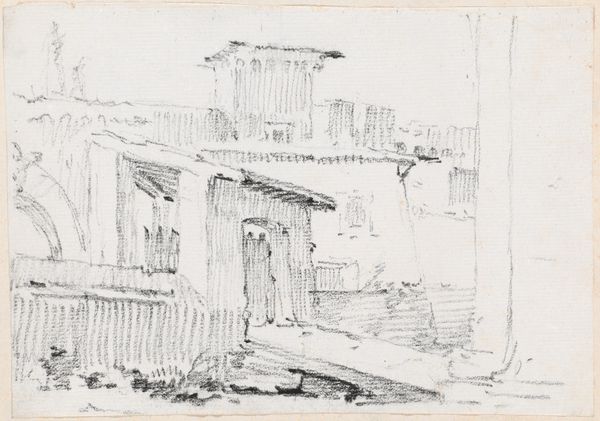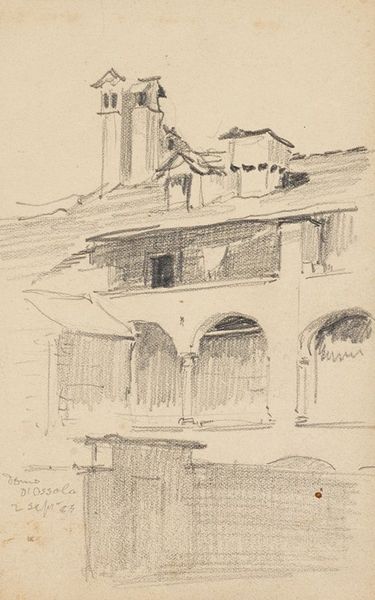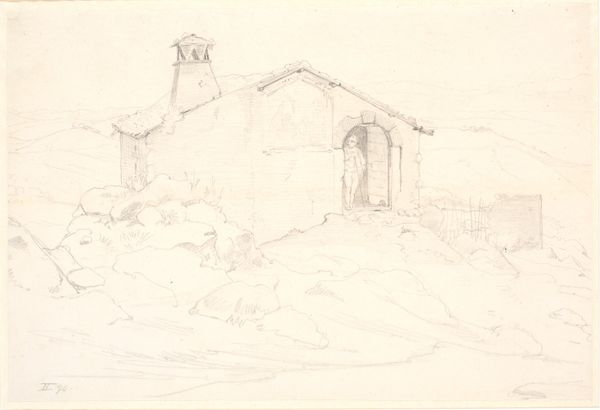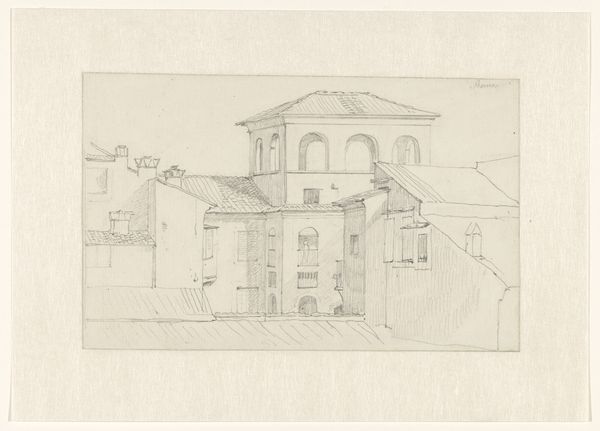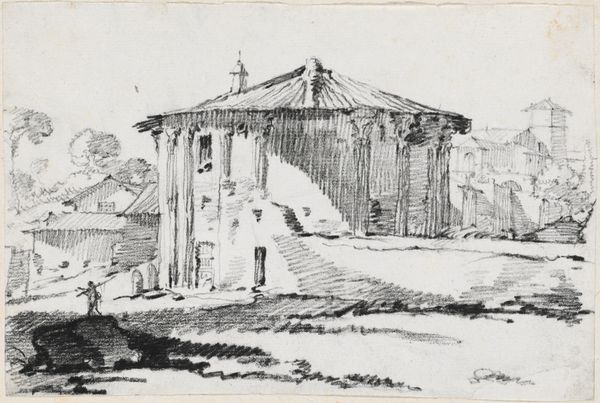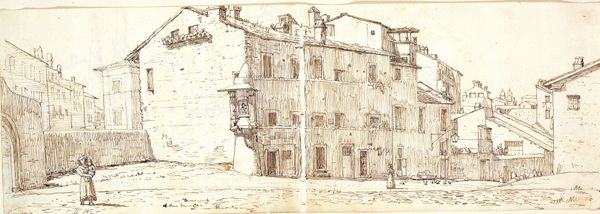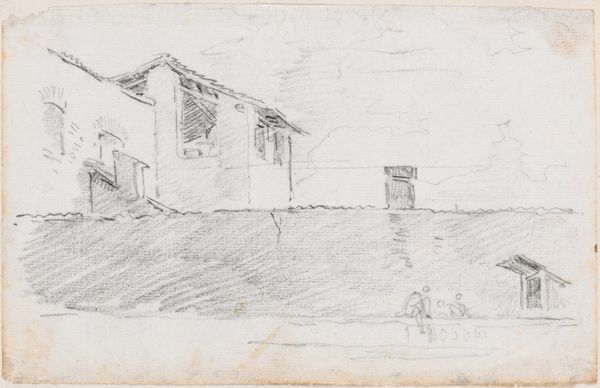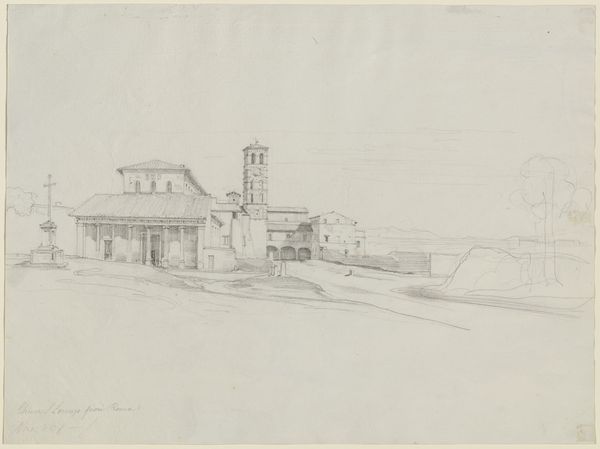
drawing, pencil
#
drawing
#
landscape
#
etching
#
romanticism
#
pencil
#
cityscape
#
academic-art
Dimensions: 144 mm (height) x 226 mm (width) (bladmaal)
Editor: Here we have Martinus Rørbye's "Street in Grotta Minarda in Abruzzo," a pencil drawing from 1835. There’s something very immediate about this cityscape, captured in such delicate lines. It really brings to the fore the materiality of architecture and human existence. What strikes you most about this work? Curator: Immediately, I'm drawn to the marks – the evident labor in the etching. The pencil wasn't just rendering an image, but documenting the way materials intersect. Note how the stones are depicted versus the wooden balcony. Each material possesses different production demands, with implications about access, wealth, and the way Rørbye constructs the social relations here. Does the rendering elevate one building material over another, and if so, how? Editor: I see what you mean. The detail in the stone stairs is far greater than that of the wood. I hadn’t really thought about the "labor" that went into the pencil marks themselves, or how they’re a way of categorizing different kinds of manual creation. The labor is almost invisibly present here. Curator: Exactly! Look, too, at how Rørbye chooses to depict human figures within the cityscape. These small details become integral to how the city is materially constructed – we are the stones, the pencil itself and its impressions on the page! Do you get a sense of a narrative through the use of pencil, an economic history that the artist captures? Editor: I do, it makes you consider buildings themselves as products of labour. And the level of detail is revealing... it feels like a visual commentary on that labour and its social strata. It emphasizes the means of making art as a dialogue between material and maker. Curator: Precisely! And the social implications that resonate beyond. I wonder what new understanding about this picture we may bring at our next visit!
Comments
No comments
Be the first to comment and join the conversation on the ultimate creative platform.
